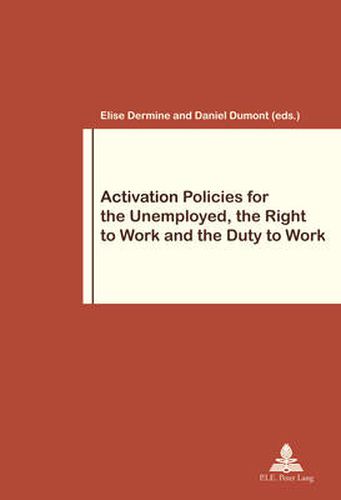Readings Newsletter
Become a Readings Member to make your shopping experience even easier.
Sign in or sign up for free!
You’re not far away from qualifying for FREE standard shipping within Australia
You’ve qualified for FREE standard shipping within Australia
The cart is loading…






Since the 1990s and the 2000s, Western social protection systems have experienced a turn towards activation. This turn consists of the multiplication of measures aimed at bringing those who are unemployed closer to participation in the labour market. These measures often induce a strengthening of the conditions that must be met in order to receive social benefits. It is in this well known context that the authors gathered in this book decided to take a closer look at the relationship between activation policies for the unemployed and the right and the duty to work. If activation measures are likely to increase transitions towards the labour market, we can also make the assumption that they may, particularly when they are marked with the seal of coercion, hinder or dramatically reduce the right to freely chosen work. In such circumstances, the realisation of the right to work, which is often stated to be the aim of those who promote activation, tends in practice to be reduced to an increasing pressure being exerted on the unemployed. In this case, isn’t it actually the duty to work that is particularly reinforced? After an historical and philosophical perspective on the issue, this assumption is confronted with the developments observed in the United States and in France, and then with the guidelines laid down in international human rights instruments. What follows is a discussion of two alternatives to the dominant activation model: the basic income guarantee and the employment guarantee.
$9.00 standard shipping within Australia
FREE standard shipping within Australia for orders over $100.00
Express & International shipping calculated at checkout
Stock availability can be subject to change without notice. We recommend calling the shop or contacting our online team to check availability of low stock items. Please see our Shopping Online page for more details.
Since the 1990s and the 2000s, Western social protection systems have experienced a turn towards activation. This turn consists of the multiplication of measures aimed at bringing those who are unemployed closer to participation in the labour market. These measures often induce a strengthening of the conditions that must be met in order to receive social benefits. It is in this well known context that the authors gathered in this book decided to take a closer look at the relationship between activation policies for the unemployed and the right and the duty to work. If activation measures are likely to increase transitions towards the labour market, we can also make the assumption that they may, particularly when they are marked with the seal of coercion, hinder or dramatically reduce the right to freely chosen work. In such circumstances, the realisation of the right to work, which is often stated to be the aim of those who promote activation, tends in practice to be reduced to an increasing pressure being exerted on the unemployed. In this case, isn’t it actually the duty to work that is particularly reinforced? After an historical and philosophical perspective on the issue, this assumption is confronted with the developments observed in the United States and in France, and then with the guidelines laid down in international human rights instruments. What follows is a discussion of two alternatives to the dominant activation model: the basic income guarantee and the employment guarantee.